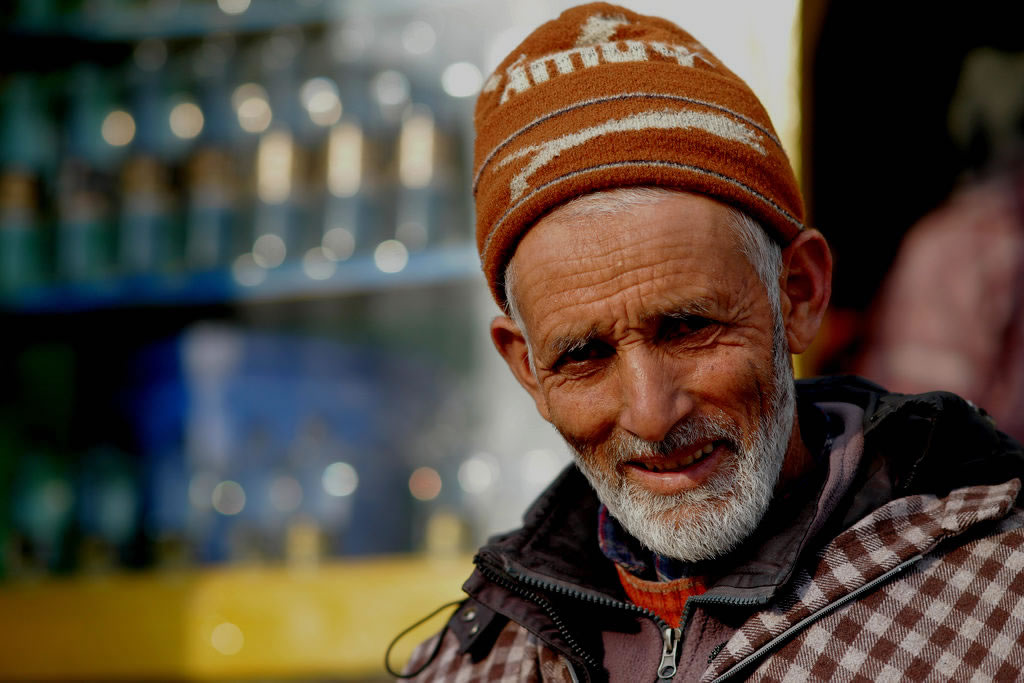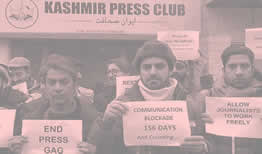Humanitarian Challenges and Security Measures along the Line of Control
Humanitarian Challenges and Security Measures along the Line of Control
Abstract
This study examines the humanitarian challenges faced by residents of Bhimber District, Pakistan, situated along the Line of Control (LOC) in Kashmir. The research focuses on the period leading up to 2021, a time marked by significant tensions and conflicts in the region. Drawing on interviews with residents and secondary data, the study explores the multifaceted humanitarian crisis caused by the ongoing conflict. It identifies key challenges such as physical insecurity, psychological trauma, disruption of essential services, economic hardship, and gender-based violence. Furthermore, the research investigates the impact of security measures implemented along the LOC.
MUHAMMAD ABDULLAH
8th semster International RelationsIqra University
While intended to
safeguard residents, these measures, including restricted movement and
checkpoints, inadvertently exacerbated existing vulnerabilities. The limitations
on movement significantly disrupted economic activities, particularly
agriculture, and negatively impacted livelihoods. Additionally, the pervasive
sense of surveillance and fear of arbitrary detentions associated with the
security measures took a toll on the mental well-being of residents, eroding
trust and fracturing the social fabric of the community. This study highlights
the complex interplay between conflict, security measures, and their
consequences for the civilian population. It underscores the need for a
comprehensive approach that prioritizes the protection of civilians,
restoration of essential services, promotion of sustainable livelihoods, and
rebuilding trust between residents and authorities.
Keywords:
Bhimber, Pakistan, Line of Control (LOC), Kashmir, conflict, security.
Introduction:
A
land of rich historical legacy, Kashmir. A place to various rulers, who ruled
around approximately 3000 years before Christ. It is place to diverse culture
and races. People have different religion. Due to different conquests its
geographical dynamics changed time to time. The last person to rule from Dogra
dynasty was Maharaja Hari Singh [1925-1947]. In his reigns the dominant
population in the region were Muslims.
Conflict
of the Kashmir was started when two nations were born in Subcontinent named as
Pakistan and India. At the time of partition Kashmir was the largest in 562
princely states. A territorial conflict was started between Pakistan and India
in 1947 on Kashmir. Both nations went to war in 1948 on this conflict. January 1, 1949: The conflict ended
with a ceasefire brokered by the United Nations (UN), leading to the
establishment of the ceasefire line, which divided the territory between India
and Pakistan. This line was not initially called the LOC; it was referred to as
the Ceasefire Line (CFL). Due to 1971 PAK-INDO war a pact was signed between
the two nations called Simla agreement.
According to that agreement CFL was changed to Line of Control. It was a
initiative of two nations to solve the dispute through peaceful means.
Bhimber District is
situated along a significant portion of the LOC, which separates Indian-held
Kashmir from Pakistan-administered areas. This district is critically important
due to its geographical location and the extensive length of the LOC that runs
through it. With a total length of 102 kilometers, divided into 66 kilometers
in Tehsil Samahni and 36 kilometers in Tehsil Barnala, Bhimber District bears
the brunt of the conflict’s direct impact. It is home to 32 villages that are
situated on LOC, with a combined population of 65,633 people. The residents of
these villages experience the severe consequences of the ongoing conflict,
including frequent ceasefire violations and associated humanitarian challenges.
Relevance of the Study
Despite
the cessation of ceasefire violations in 2021, the period leading up to that
year saw significant tensions and conflicts along the LOC. Studying Bhimber
District before 2021 is crucial for understanding the full scope of the humanitarian
and security challenges faced by the local population. The research will
highlight the specific effects of these tensions on the lives of residents,
including the psychological, economic, and social repercussions. By analyzing
the situation prior to the cessation of violations, this study aims to offer
valuable insights into the dynamics of conflict and the effectiveness of
security measures during this period. The findings will help in understanding
how past conflicts have shaped the current state of affairs and inform future
peace-building and conflict management strategies.
Thesis Statement
The
residents of Bhimber District have endured significant humanitarian challenges
as a result of the protracted conflict along the Line of Control (LOC). The implementation
of security measures, while intended to protect civilians, has exacerbated
these challenges, leading to a complex interplay of physical, psychological,
and economic hardships.
Research questions:
- What are the main humanitarian difficulties experienced by
residents along the Line of Control (LOC)?
- What were the key humanitarian challenges faced by residents of
Bhimber District along the Line of Control before 2021?
- How did the security measures implemented along the LOC impact
daily life in Bhimber District?
Finding and discussions
What are the main
humanitarian difficulties experienced by residents along the Line of Control
(LOC)?
The
Line of Control (LOC) in Kashmir has been a focal point of conflict for
decades, resulting in significant humanitarian challenges for the civilian
population residing in its vicinity. A primary concern is the pervasive threat
to physical safety posed by the ongoing conflict. Frequent ceasefire
violations, cross-border shelling, and armed clashes create a constant state of
fear and insecurity among residents. The unpredictability of these incidents
has a profound impact on daily life, disrupting routines and livelihoods.
While
the general overview highlights the pervasive nature of the humanitarian
crisis, a deeper analysis reveals the multifaceted nature of the challenges
faced by residents along the LOC. Here, we delve into specific aspects of the
crisis:
1. Psychological
Trauma:
Residents
along the Line of Control (LOC) in Kashmir, a disputed territory between India
and Pakistan, experience significant psychological trauma due to the ongoing
conflict. The constant threat of violence, displacement, and uncertainty has
had a profound impact on their mental health (Akhtar & Bilal, 2021; Pandey
& Luhar, 2021; Tahirkheli, 2019).
Direct
Exposure to Violence:
- Witnessing Violence: Many residents have witnessed acts of violence,
including bombings, shootings, and clashes between military forces. This
exposure can lead to severe psychological distress (Akhtar & Bilal,
2021).
- Being Victims of Violence: Residents may have personally experienced
violence, such as being injured, detained, or losing loved ones. These
experiences can have long-lasting psychological effects (Tahirkheli,
2019).
Displacement
and Loss:
- Forced Displacement: The conflict has forced countless individuals to
flee their homes, leading to displacement and separation from loved ones.
This can cause feelings of loss, insecurity, and anxiety (Pandey &
Luhar, 2021).
- Loss of Loved Ones: Many residents have lost family members or
friends due to violence, which can lead to grief, depression, and a sense
of hopelessness (Tahirkheli, 2019).
Fear and
Uncertainty:
- Constant Threat of
Violence: The unpredictable nature
of the conflict creates a constant state of fear and anxiety. Residents
may live in fear of being caught in crossfire or targeted by violence
(Akhtar & Bilal, 2021).
- Uncertainty About the
Future: The ongoing conflict and
uncertainty about its resolution can contribute to feelings of
hopelessness and despair (Pandey & Luhar, 2021).
Limited
Access to Mental Health Services:
- Lack of Professionals: There is a shortage of mental health
professionals in the region, making it difficult for residents to access
necessary support (Tahirkheli, 2019).
- Stigma and Discrimination: The stigma associated with mental health issues
can prevent individuals from seeking help (Tahirkheli, 2019).
Psychological
Consequences:
- Post-Traumatic Stress
Disorder (PTSD):
Exposure to violence and displacement can lead to PTSD, characterized by
intrusive memories, flashbacks, hypervigilance, and avoidance behaviors
(Pandey & Luhar, 2021).
- Depression: The constant stress and uncertainty of the
conflict can contribute to depression, characterized by feelings of
sadness, hopelessness, and loss of interest (Tahirkheli, 2019).
- Anxiety: Residents may experience anxiety, including
excessive worry, fear, and physical symptoms such as rapid heartbeat and
sweating (Akhtar & Bilal, 2021).
- Substance Abuse: As a coping mechanism, some residents may turn
to substance abuse to deal with their psychological distress (Pandey &
Luhar, 2021).
Impact on
Children:
Children are
particularly vulnerable to the psychological effects of the conflict. They may
experience nightmares, bedwetting, difficulty concentrating, and social
withdrawal. Witnessing violence or losing loved ones can have long-lasting
psychological consequences for children (Akhtar & Bilal, 2021).
2. Education
Disruption:
Residents
along the Line of Control (LOC) in Kashmir face significant disruptions to
their education due to the ongoing conflict between India and Pakistan. The
frequent clashes, shelling, and security threats have had a profound impact on
the educational system in the region.
School
Closures and Infrastructure Damage:
- Frequent Closures: Schools are often forced to close due to ceasefire violations,
cross-border shelling, and the general insecurity in the region (Akhter
& Bilal, 2021).
- Infrastructure
Damage: Schools may be damaged or
destroyed in the conflict, making it difficult for students to access
education (Akhter & Bilal, 2021).
Psychological
Impact on Students:
- Fear and Anxiety: The constant threat of violence can create a climate of fear and
anxiety, making it difficult for students to concentrate and learn
effectively (Tahirkheli, 2019).
- Trauma: Exposure to violence and displacement can lead to psychological
trauma, which can negatively impact students' academic performance and
well-being (Pandey & Luhar, 2021).
Increased
Dropout Rates:
- Economic
Hardships: The conflict can lead to
economic hardships, forcing families to withdraw their children from
school to contribute to household income.
- Displacement: Forced displacement can disrupt children's education by separating
them from their schools and communities.
Limited
Access to Educational Resources:
- Lack of Teachers: The conflict may lead to a shortage of teachers, making it
difficult to provide adequate instruction to students.
- Scarcity of
Educational Materials: Schools may lack
textbooks, stationery, and other essential educational resources.
Gender
Disparity:
- Disproportionate
Impact on Girls: Girls may be
particularly vulnerable to educational disruptions due to cultural norms
and gender-based violence.
Long-Term
Consequences:
- Reduced
Educational Opportunities: Disruptions to
education can have long-term consequences for students, limiting their
future opportunities and prospects.
- Skill Gaps: Lack of education can lead to skill gaps and hinder economic
development in the region.
The
ongoing conflict along the LOC in Kashmir has had a devastating impact on the
education system in the region. Addressing these challenges requires a
comprehensive approach that ensures the safety and well-being of students,
provides access to education, and addresses the underlying causes of the
conflict.
3. Gender-Based
Violence:
Residents
along the Line of Control (LOC) in Kashmir, a disputed territory between India
and Pakistan, experience a heightened risk of gender-based violence (GBV) due
to the ongoing conflict and the breakdown of social structures. This includes a
range of harmful practices such as domestic violence, sexual assault, and
forced marriage.
Domestic
Violence:
- Increased Stress
and Tension: The conflict can
exacerbate existing tensions within families, leading to increased
domestic violence (Tahirkheli, 2019).
- Loss of Income: Economic hardship caused by the conflict can increase stress and
financial strain on families, making women more vulnerable to domestic
violence (Pandey & Luhar, 2021).
Sexual
Assault:
- Increased
Vulnerability: The breakdown of
social structures and the presence of armed forces can increase women's
vulnerability to sexual assault (Tahirkheli, 2019).
- Impunity: Perpetrators of sexual assault may feel emboldened to act with
impunity due to the lack of accountability in conflict zones (Akhtar &
Bilal, 2021).
Forced
Marriage:
- Economic
Necessity: Families may resort to
forced marriage to secure economic benefits or alliances, particularly in
times of crisis (Pandey & Luhar, 2021).
- Displacement and
Vulnerability: Displacement and
the breakdown of social networks can make women more vulnerable to forced
marriage (Tahirkheli, 2019).
Impact
on Women's Health and Well-being:
- Physical Injuries: GBV can lead to physical injuries and long-term health
consequences (Pandey & Luhar, 2021).
- Psychological
Trauma: Survivors of GBV often
experience severe psychological trauma, including PTSD, depression, and
anxiety (Tahirkheli, 2019).
- Social Isolation: GBV can lead to social isolation and stigmatization, making it
difficult for women to access support and rebuild their lives (Akhtar
& Bilal, 2021).
Challenges
to Accessing Justice:
- Fear of
Retribution: Women may be
reluctant to report GBV due to fear of retaliation from perpetrators or
their families (Pandey & Luhar, 2021).
- Lack of Access to
Legal Services: Limited access to
legal services and the slow pace of justice can make it difficult for
women to seek redress (Tahirkheli, 2019).
Efforts
to Address Gender-Based Violence:
- Humanitarian
Organizations: Several
humanitarian organizations work to address GBV in conflict-affected areas,
providing support services to survivors and advocating for their rights
(Akhtar & Bilal, 2021).
- Women's Rights Organizations: Local and international women's rights organizations play a
crucial role in raising awareness of GBV, providing legal assistance, and
advocating for policy reforms (Tahirkheli, 2019).
- Government
Initiatives: Governments in
the region have implemented some initiatives to address GBV, such as
establishing shelters for survivors and training law enforcement personnel
on gender-based violence (Pandey & Luhar, 2021).
4. Livelihood
Insecurity:
Residents
along the Line of Control (LOC) in Kashmir face significant livelihood
difficulties due to the ongoing conflict between India and Pakistan. The
frequent clashes, shelling, and security restrictions have disrupted economic
activities, limited access to markets, and created an uncertain environment for
businesses and individuals.
Economic
Disruptions:
- Agriculture and
Livestock: The conflict can disrupt
agricultural activities, such as farming and livestock rearing, due to the
threat of violence and damage to infrastructure (Pandey & Luhar,
2021).
- Trade and
Commerce: The conflict can hinder
trade and commerce, limiting access to markets and reducing economic
opportunities (Akhtar & Bilal, 2021).
- Tourism: The conflict can deter tourists from visiting the region,
negatively impacting the tourism industry and related businesses
(Tahirkheli, 2019).
Limited
Access to Markets and Resources:
- Security Concerns: Security concerns and restrictions on movement can make it
difficult for residents to access markets and obtain essential goods and
services.
- Infrastructure
Damage: Damaged roads, bridges,
and other infrastructure can hinder economic activity and access to
markets.
Unemployment
and Underemployment:
- Job Losses: The conflict can lead to job losses in various sectors, such as
agriculture, tourism, and trade.
- Limited Employment
Opportunities: The lack of
economic activity can limit employment opportunities for residents,
forcing them to rely on subsistence farming or informal work.
Poverty
and Food Insecurity:
- Reduced Income: The loss of livelihoods can lead to poverty and food insecurity,
making it difficult for residents to meet their basic needs.
- Rising Prices: The conflict can disrupt supply chains and increase the prices of
essential goods, further exacerbating poverty.
Displacement
and Loss of Property:
- Forced
Displacement: The conflict can
force residents to flee their homes, leading to the loss of property and
livelihoods.
- Destruction of
Property: Clashes and shelling can
destroy homes, businesses, and agricultural land, causing significant
economic losses.
The
ongoing conflict along the LOC in Kashmir has had a devastating impact on the
livelihoods of residents. Addressing these challenges requires a comprehensive
approach that promotes peace and reconciliation, supports economic development,
and provides essential services to affected populations.
What were the key
humanitarian challenges faced by residents of Bhimber District along the Line
of Control before 2021?
The
residents of Bhimber District have endured the brunt of the Kashmir conflict,
facing a complex array of humanitarian challenges. Their experiences, as
captured in interviews and corroborated by secondary data, illuminate the
profound impact of the conflict on their lives.
Interviews
- Asad : "We live in a constant state of fear. The sound of shelling
has become a part of our daily lives. We never know when the next attack
will happen."
- Naheed: "Our children are terrified. They can't focus on their
studies because of the constant fear."
- Farhan: "The conflict has destroyed our livelihoods. Our fields are
barren, and we have no way to earn a living. Many people have left the
village in search of better opportunities."
- Samina : "Our children have missed months of school due to closures.
There is no doctor in the village, and we have to travel long distances
for basic healthcare."
These
firsthand accounts provide a powerful testament to the human cost of the
conflict. They highlight the psychological trauma, economic hardship, and
disruption of essential services experienced by residents of Bhimber District.
Psychological
Trauma
- Constant Fear and Anxiety: The unpredictable nature of the conflict creates a chronic state
of fear and anxiety among residents. (Akhtar & Bilal, 2021)
- PTSD: Exposure to violence and displacement can lead to post-traumatic
stress disorder (PTSD), characterized by intrusive memories, flashbacks,
hypervigilance, and avoidance behaviors. (Pandey & Luhar, 2021)
- Depression and Anxiety: The constant stress and uncertainty of the conflict can contribute
to depression and anxiety, affecting individuals' mental well-being.
(Tahirkheli, 2019)
- Stigma and Discrimination: The stigma associated with mental health issues can prevent
individuals from seeking help, further exacerbating their suffering.
(Tahirkheli, 2019)
Economic
Hardship
- Loss of Livelihoods: The conflict has disrupted agricultural activities, trade, and
other economic opportunities, leading to job losses and poverty. (Pandey
& Luhar, 2021)
- Limited Access to Markets: Security concerns and restrictions on movement have hindered
access to markets and resources, making it difficult for residents to earn
a living. (Happymon, 2021)
- Displacement and Property
Loss: Forced displacement and
the destruction of property have further exacerbated economic hardship.
(Akhtar & Bilal, 2021)
Social
Disruption
- Breakdown of Social
Networks: The conflict has
disrupted social networks and support systems, leading to feelings of
isolation and despair. (Happymon, 2021)
- Forced Displacement: Displacement can separate families and communities, making it
difficult for individuals to cope with the challenges they face. (Akhtar
& Bilal, 2021)
- Erosion of Trust: The conflict has eroded trust between residents and authorities,
hindering efforts to address the humanitarian crisis. (Tahirkheli, 2019)
Education
Disruption
- School Closures: Frequent closures of schools due to security concerns have
disrupted education. (Akhtar & Bilal, 2021)
- Infrastructure Damage: Schools may be damaged or destroyed in the conflict, limiting
access to education. (Happymon, 2021)
- Psychological Impact: The stress and trauma of the conflict can negatively impact
students' learning and well-being. (Tahirkheli, 2019)
Healthcare
Challenges
- Limited Access to
Healthcare: Restricted movement and
the destruction of healthcare infrastructure have hindered access to
medical care. (Happymon, 2021)
- Shortages of Medical
Supplies: The conflict has
disrupted the supply chain for essential medicines and equipment. (Akhtar
& Bilal, 2021)
- Increased Health Risks: Displacement, malnutrition, and exposure to unsanitary conditions
have increased health risks for residents. (Pandey & Luhar, 2021)
Human
Rights Violations
- Arbitrary Arrests and
Detention: Residents may be
subjected to arbitrary arrests and detention without due process.
(Tahirkheli, 2019)
- Torture and Ill-Treatment: Reports of torture and ill-treatment by security forces have
emerged. (Akhtar & Bilal, 2021)
- Restrictions on Freedom of
Expression: The conflict has limited
freedom of expression, hindering civil society organizations from
advocating for the rights of residents. (Happymon, 2021)
Environmental
Degradation
- Landmine Contamination: The use of landmines has contaminated the land, making it unsafe
for agriculture and human activity. (Pandey & Luhar, 2021)
- Deforestation and Soil
Erosion: The conflict has led to
deforestation and soil erosion, further jeopardizing livelihoods and
environmental sustainability. (Akhtar & Bilal, 2021)
Impact
on Vulnerable Groups
- Women and Girls: Women and girls are disproportionately affected by the conflict,
facing increased risks of gender-based violence, discrimination, and
limited access to education and employment. (Tahirkheli, 2019)
- Children: Children are particularly vulnerable to the effects of the
conflict, experiencing psychological trauma, educational disruption, and
increased risk of exploitation. (Akhtar & Bilal, 2021)
- Elderly: The elderly population may face additional challenges due to their
age and physical limitations, including limited mobility, access to
healthcare, and social support. (Happymon, 2021)
Addressing
the Humanitarian Crisis
Addressing
the humanitarian crisis in Bhimber District requires a comprehensive approach
that addresses the root causes of the conflict and provides essential services
to affected populations. This includes:
- Promoting Peace and
Reconciliation: Efforts to
promote dialogue and reconciliation between India and Pakistan are
essential for resolving the conflict and creating a more peaceful
environment.
- Humanitarian Assistance: Providing humanitarian aid, including food, shelter, healthcare,
and education, is crucial for meeting the immediate needs of affected
residents.
- Addressing Human Rights
Violations: Ensuring accountability
for human rights abuses and promoting respect for human rights are
essential for building trust and justice.
- Economic Development: Supporting economic development and job creation can help alleviate
poverty and improve livelihoods.
- Addressing Environmental
Degradation: Implementing
measures to protect the environment and restore damaged ecosystems can
help ensure long-term sustainability.
- Mental Health Support: Providing access to mental health services is essential for
addressing the psychological trauma experienced by residents.
How did the security
measures implemented along the LOC impact daily life in Bhimber District?
As
detailed in the DC office data, Bhimber District comprises 32 villages directly
affected by the LOC. The imposition of security measures, including checkpoints
and buffer zones, significantly restricted the movement of residents within and
beyond these villages (Happymon, 2021). This is corroborated by the findings of
Jacob Happymon's The Line of Control, which emphasizes the physical
barriers erected along such borders (Happymon, 2021). These restrictions had a
devastating impact on economic activities, particularly agriculture, as farmers
faced difficulties in accessing their fields and transporting produce to
markets.
Interviewees
also highlighted the challenges posed by these restrictions. "Ali," a
resident of Bhimber, described how the time spent navigating checkpoints
consumed valuable hours that could have been invested in productive activities.
"Zara" emphasized the impact on their livelihoods, stating, "We
couldn't take our produce to the market, and we suffered huge losses."
Psychological
Impact and Erosion of Trust
Living
under the constant shadow of security measures took a significant toll on the
mental well-being of residents. The pervasive sense of surveillance and the
fear of arbitrary detentions created a climate of anxiety and mistrust. As
mentioned in interviews, the psychological impact was profound, with residents
experiencing heightened stress levels and a decline in their overall quality of
life (Tahirkheli, 2019).
The
militarization of the region also eroded the social fabric of the community.
Traditional support networks and community bonds were weakened as people
retreated into themselves out of fear. This erosion of trust between residents
and authorities further compounded the challenges faced by the population.
Educational
Disruption
The
security measures also had a significant impact on education in Bhimber
District. School closures, curfews, and restricted movement made it difficult
for students to attend classes regularly. This disruption led to learning
losses, increased dropout rates, and limited educational opportunities for many
children (Akhtar & Bilal, 2021).
Healthcare
Challenges
The
conflict and security measures hindered access to healthcare services in
Bhimber District. Restricted movement made it difficult for residents to reach
hospitals and clinics, while the disruption of medical supply chains led to
shortages of essential medicines and equipment. This limited access to
healthcare had a severe impact on the health and well-being of the population,
particularly vulnerable groups such as children, the elderly, and pregnant
women.
Limited
Access to Essential Services
The
security measures also restricted access to essential services, such as
electricity, water, and sanitation. The disruption of these services further
exacerbated the challenges faced by residents, making it difficult to meet
their basic needs and improve their quality of life.
Economic
Development and Poverty
The
restrictions on movement and economic activities imposed by the security
measures hindered the economic development of Bhimber District. Businesses
struggled to operate, investment was discouraged, and job opportunities were
limited. This led to increased poverty and hardship among residents,
particularly those living in rural areas.
Human
Rights Violations
The
security measures were often accompanied by human rights violations, including
arbitrary arrests, detention without trial, and restrictions on freedom of
expression. These violations further eroded trust between residents and
authorities and contributed to the overall sense of insecurity.
Environmental
Degradation
The
conflict and security measures also had negative environmental consequences.
The use of landmines and unexploded ordnance contaminated the land, making it
unsafe for agriculture and human activity. Deforestation and soil erosion
occurred due to the displacement of populations and the destruction of natural
resources.
Long-Term
Impacts
The
long-term impacts of the security measures on Bhimber District are
far-reaching. The psychological trauma, economic hardship, and social
disruption caused by the conflict have had lasting effects on the lives of
residents. Many individuals continue to struggle with the consequences of
displacement, poverty, and limited opportunities.
The
security measures implemented along the LOC in Bhimber District, while intended
to protect residents, had unintended consequences that exacerbated existing
vulnerabilities and hindered the region's development. The restrictions on
movement, economic disruptions, psychological impacts, and human rights
violations created a complex humanitarian crisis. Addressing the long-term
effects of these measures requires a comprehensive approach that focuses on
rebuilding trust, supporting economic recovery, promoting human rights, and
addressing the psychological needs of the affected population.
Conclusion
The
residents of Bhimber District have endured significant humanitarian challenges
as a result of the protracted conflict along the Line of Control (LOC). This
research has demonstrated the complex interplay between physical insecurity,
economic hardship, and psychological distress experienced by the population.
While security measures were implemented with the intention of protecting
civilians, they often exacerbated existing vulnerabilities, leading to further
hardship and suffering.
The
findings of this study underscore the urgent need for comprehensive
humanitarian interventions to address the immediate needs of the affected
population. Long-term strategies are also essential for rebuilding livelihoods,
restoring essential services, and promoting psychological well-being. Moreover,
it is imperative to explore alternative approaches to security that prioritize
the protection of civilians while minimizing the negative impacts on their
lives.
By
understanding the experiences of the people of Bhimber District, policymakers
and humanitarian organizations can develop more effective strategies for
conflict prevention, peacebuilding, and the protection of vulnerable
populations.
Note: To protect and
hide the identity of the interview, Pseudonyms are used. Therefore, in order to
confirm their residence and to contact them one should contact the author
first.
References
Academic Sources:
Akhtar,
S., & Bilal, M. (2021). Military Tensions Across the Line of Control:
Implications for Local Population in Pakistan-Administered Kashmir. Pakistan
Journal of Social Research.
Pandey,
N., & Luhar, N. (2021). Fluidity of armed conflict in Kashmir: from the
international humanitarian law perspective. Inderscience Publishers.
Tahirkheli,
A. I. (2019). Kashmir Conflict: The Approach of Humanitarianism. Strategic
Thought.
Government Reports:
Data
from Bhimber District DC Office
Media Sources:
Dawn
News article
https://www.dawn.com/news/1525564
Books:
Jacob,
Happymon. The Line of Control, Travelling with the Indian and Pakistani Armies.
India: Penguin Random House, 2018.
Related Research Papers




























